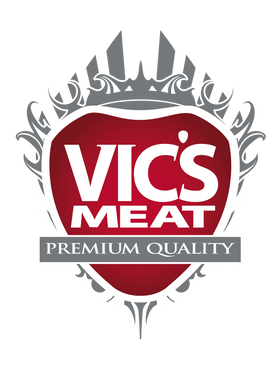Red Wine-Braised Beef Cheeks
Beef cheeks are a hard-working muscle that’s inexpensive but delivers deep restaurant-quality flavour. Since it’s a tougher cut of meat, it’s best prepared by slow cooking until it reaches a tender, fall apart texture.

SERVES 6
Prep time 20 minutes (plus marinating)
Cook 4 hours
INGREDIENTS
- 3 beef cheeks, trimmed of sinew, about 300g
- 1 bottle (750 ml) full-bodied red wine
- 3 thyme sprigs
- 2 garlic cloves, bruised with the flat of a knife, plus 2 extra cloves, finely chopped
- 2 bacon rashers, rind trimmed, sliced
- Olive oil, for cooking
- 200g Swiss brown mushrooms, halved
- 1 small brown onion, diced
- 1 small carrot, diced
- 1 celery stalk, diced
- 1 fresh bay leaf
- 2 teaspoons red wine vinegar
- Coarsely chopped flat-leaf (Italian) parsley, to serve
- Finely grated orange or lemon zest, to serve (optional)
Serving suggestion: parsnip and potato mash or buttered egg noodles, such as fettuccine
NOTE: If you have the time, cool the braised beef cheeks in the liquid then refrigerate for a day or two to develop the flavours.
1. Combine the beef cheeks, wine, thyme and bruised garlic in a container large enough to fit snugly, cover and refrigerate overnight to marinate (this will infuse the beef cheeks with a beautiful flavour, but if you don’t have time, you can marinate them for just an hour or two).
2. Preheat the oven to 180°C. Render the bacon rind in an enamelled cast-iron casserole on the stovetop, then add the bacon and cook for 4–5 minutes over medium–high heat, stirring occasionally until browned. Transfer to a plate, discarding rinds. Add a splash of olive oil to the casserole if necessary, add the mushrooms and fry over high heat, stirring occasionally, for 6–8 minutes until browned. Remove from the pan with a slotted spoon.
3. Remove the beef cheeks from the marinade (reserve the wine and thyme, but discard the garlic) and pat the beef cheeks dry with paper towel. Season generously with salt and pepper, add to the casserole and sear over medium–high heat, turning occasionally, for 5–6 minutes to brown well all over: the deeper the browning, the better the flavour of the finished dish, so take your time to do this well. Transfer to a plate.
4. Add another splash of oil to the casserole, then add the onion, carrot and celery and fry, stirring occasionally, for 6–7 minutes until tender and beginning to caramelise. Stir in the extra chopped garlic until fragrant, add the reserved wine and thyme, then boil for 5–6 minutes until reduced by half. Add 125ml (½ cup) of water and the bay leaf, bring to a simmer, season with salt and pepper and return the beef cheeks to the casserole along with the mushrooms and bacon. Make a cartouche by cutting out a round of baking paper to fit the diameter of the casserole, crumple it up, then wet it under cold running water. Lay it directly on the surface of the mixture, pressing to get rid of any air bubbles, cover tightly with a lid and transfer the casserole to the oven to braise for 3–3½ hours until fork-tender.
5. Remove the beef cheeks from braising liquid. Put the casserole on the stovetop over medium–high heat and simmer for 5–6 minutes until the braising liquid is slightly reduced. Stir in the vinegar and check the seasoning. Coarsely shred the beef cheeks and return the meat to the sauce. Serve scattered with the parsley and orange or lemon zest (if using).
This recipe has been taken straight from the pages of MEAT: The Ultimate Companion by Anthony Puharich & Libby Travers. Hungry for more? Grab yourself a signed copy of the book here.

